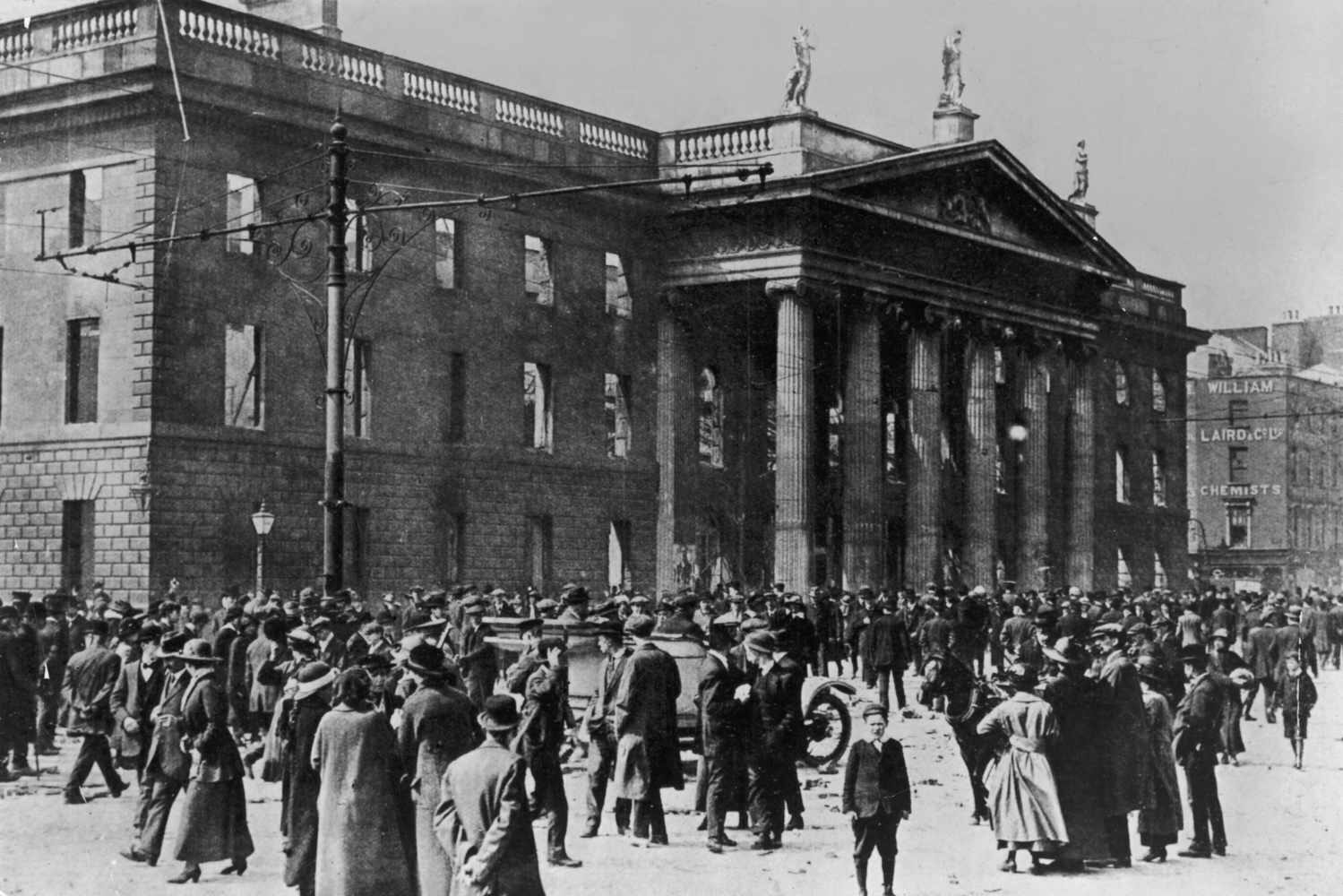– Robert Nielsen gives an outline of the key moments in Ireland’s troubled history with abortion.
Ireland has the most peculiar relationship with abortion in the world. You see, in Ireland we pretend it doesn’t exist. Abortion is something to be ignored at all costs and unlike in most other countries, it is almost completely absent from the political discourse. Abortion is more or less (more on that) completely illegal and in fact the constitution contains an amendment (passed in 1983) that guarantees the “right to life of the unborn” which has an “equal right to life” as the mother. This doesn’t mean abortions don’t take place, they do, but in secret or in England. However, whether we like it or not abortion has exploded onto the political stage and we are going to finally have to deal with the problem that many wish would just disappear.

To understand the current political drama, I first must explain the so-called “X case”. This was a judgement by the Irish Supreme Court which has the potential to change Ireland’s stance on abortion. You see, a 14 year old girl (referred to as X to protect her identity) was raped by her neighbour. For obvious reasons she did not wish to raise the child (who could blame her) and she went to England with her mother to have an abortion. However, her family contacted the Gardai to see if DNA evidence would be needed from the foetus to prosecute the rapist. Upon hearing about the case, the Attorney General got an injunction to prevent the abortion from occurring. She appealed this decision which went all the way to the Supreme Court. (As it turned out, the girl miscarried shortly after the judgement before she had an abortion).
The X judgement comprised three main points. Firstly, people had a right to information about abortion. This may seem strange, but up until then there was heavy censorship of anything that did not agree with Catholic teaching. If any book mentioned abortion, even in an offhand manner, it would be banned. Secondly, the Supreme Court ruled that people had a right to travel to get an abortion (again this sounds outrageous that a Court had to rule this, but Ireland at the time was a very narrow minded place, still in the grips of the Church. Contraceptives were not available until the 80s and even then only for married couples, homosexuality wasn’t decriminalised until 1993, divorce was allowed until a referendum narrowly passed it in 1996.)
The third and most contentious decision was that abortion was permissible if the mother’s life was in danger, including the danger of suicide. This is probably the most contentious Court judgement in Irish history and lead to no end of debate and argument. In 1992, three referendums were held simultaneously on the X case rulings. The first two, (on right to information and right to travel) were passed, though it amazing that more than one third voted against basic rights to travel and information. The third referendum would have legalised abortion if the mother’s life was in risk, but not in the case of suicide. This was seen as too restrictive by the pro-choice side and too liberal by the pro-life side and was defeated by two-thirds to one-third. A second attempt was made in 2002 to pass the referendum again without the suicide conditionality and again this motion was defeated (though the split was almost 50-50).
Then there was the D Case where a 17 year old girl discovered her foetus had a medical condition (called anencephaly) which means that it won’t survive outside the womb. For obvious reasons she did not want to carry around a foetus only for it to die in front of her. The issue arose because D was in state care after being taken from an abusive family. As the state was her guardian it had power to refuse to allow her to travel. As neither her life was in danger nor was she suicidal she was refused to get an abortion. Despite pointing out the very obvious fact that it would be pointlessly cruel to force her to continue to her pregnancy, the state fought the case (you would think the State had bigger targets to bring to court than pregnant teenage girls). She eventually won the court case.
In 2010 the European Court of Human Rights made a landmark ruling in what became known as the A,B and C case. Three women living in Ireland (two were Irish and one was Lithuanian) brought cases to Europe for the right to an abortion. A was unemployed and living in poverty with a history of alcohol addiction with children in foster care. She naturally felt that she was not in a position to raise another child and that it would be more responsible to have an abortion. B became pregnant after the morning after pill failed to work. C was in remission from cancer and was unsure if she could receive treatment while pregnant. All three women suffer medical complications and bleeding from the abortion and could not get adequate medical care due to the confusion over the state of Irish law. The Court ruled that while there was no right to an abortion, the right to privacy was being violated and that government would have to change its abortion laws. In typical Irish style, the government did everything possible to kick the can down the road.
This left Ireland in the confusing state where no one really knew what the law on abortion was. Politicians continued to avoid the problem as best as they could and thousands of women travelled every year to England to get abortions while the rest of the country looked the other way. This unnecessary secrecy makes the women involved feel like criminals and feel like they have a stigma that prevents them from telling other people. As a result they cannot get post abortion treatment either medically or mentally and instead must suffer in silence.
All of which changed on October 28th 2012 when Savita Halapanavar died in hospital. She had been denied treatment as she was pregnant at the time. Despite the fact that the foetus was going to die anyway, doctors refused to operate while they could still detect a heartbeat. Savita and her husband repeatedly requested an abortion, but were refused and told “this is a Catholic country”. This reignited the abortion debate and thousands (including myself) marched through the streets of Dublin in protest at this outrage. The fact a woman died for no reason other than rigid dogma made a mockery of the slogan “pro-life”. Despite 20 years of avoiding the issue, politicians will finally have to legislate for the X case. Irish politics is moving slowly and there is talk of backbencher revolts and splits in the coalition, but it seems likely that a law will eventually be passed that will allow abortions in the event of threats to life of the mother, including the risk of suicide.
The risk of suicide is a controversial issue (only the most heartless would oppose abortion to save the mother’s life). There is a suspicion that women would fake depression and lead to “abortion on demand” (a completely meaningless soundbite as there is no other kind of abortion). Draft legislation had included the requirement that pregnant women must appear before 6 consultants to prove she really is suicidal. This is an outrageous and absurd requirement and it is extremely obvious that the last thing you ever ask a suicidal person is prove they’re suicidal. This would be an extremely cruel procedure to put vulnerable women through and would only cause suffering. Behind most of the anti-abortion arguments is the general feeling that women cannot be trusted. They cannot be trusted to make decisions about their lives or bodies. They cannot be trusted about their feelings either, given the opportunity they would lie and fake being suicidal. The common theme is that the Church or the State or the religious fundamentalists should make the decisions for these women as if they knew best.
There seems to be little recognition that it is not easy to fake being suicidal and even going before a single consultant would be a harrowing experience. Surely if the mere thought of raising a child drives someone to think about suicide, it is wrong to force them to raise the child, consequences be damned? The anti-abortion side is silent on what exactly they propose to happen to suicidal women they force to raise a child they don’t want. They claim that “abortion is not a treatment for suicide” which misses the point as no one is claiming it is. But if the foetus is the cause of the suicidal thoughts, it is simply cruel to force the mother to have the child simply because it fits with the anti-abortion sides’ ideology. Why does the anti-abortion side presume that they understand a mother’s situation better than she does? Surely the woman knows best about whether she is able to raise a child?
The X case, even if it is legislated for, says nothing about rape. So even if the law passes, women who get pregnant from rape will be forced to raise the child or go to England. Seeing as this was such a controversial point in the American election, it is strange that it has received no comment in Ireland. The idea that a raped woman, on top of all she has suffered, must now raise the child of her rapist, is a horrific thought that is completely indefensible.
We have to legislate for the X case. We have to allow abortion in the event of risk to a mother’s health and life, including the risk of suicide. We have to allow women to get an abortion if they are pregnant from rape. But most of all, we have to trust women. We have to trust that they are mature and responsible enough to make decisions for themselves. We have to stop treating them with suspicion as though they will turn into murderers if we turn our back. We cannot pretend that the Church or anti-abortionists somehow know what’s best for women. We need to trust that women understand their circumstances best and provide support for whatever decision they make. Enough women have died. Enough women have suffered. It’s time.

